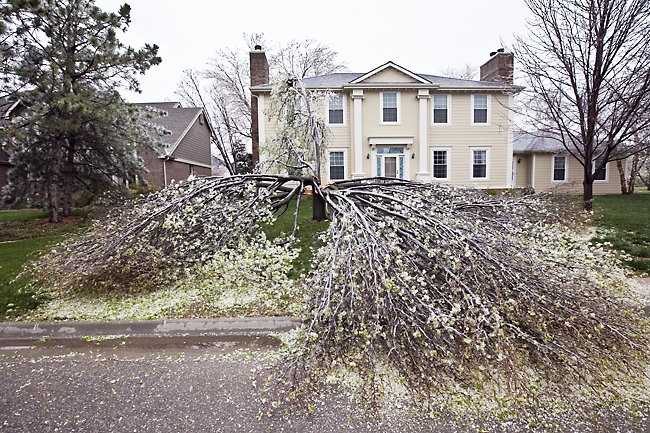NEW ORLEANS (AP) – Stinky but handsome and widely popular landscape trees have spawned aggressive invaders, creating thickets that overwhelm native plants and sport nasty four-inch spikes.
Bradford pears and 24 other ornamental trees were developed from Callery pears – a species brought to America a century ago to save ravaged pear orchards. Now, their invasive descendants have been reported in more than 30 states.
“Worse than murder hornets!” was the tongue-in-cheek title of a United States Department of Agriculture (USDA) webinar in 2020 about Callery pears including the two dozen thornless ornamental varieties sold since the 1960s.
“They’re a real menace,” said Jerrod Carlisle, who discovered that four trees in his yard and one at a neighbour’s had spawned thousands on 50 acres he was turning from cropland to woods in Otwell, a community of about 400 in southern Indiana.
Indiana is among 12 midwestern and western states that have reported invasions, though most are in the South and Northeast.
Until 2015, Carlisle rented his field to a farmer. Then he enrolled it in a USDA crop reduction programme that paid for planting 29,000 trees as wildlife habitat.

Carlisle realised the spiky flowering pears were a problem in 2019. When he cut or mowed them, new sprouts popped up. Trees sprayed with herbicide regrew leaves. Cutting off bark in a circle around the trunk kills most trees. Not these.
He and his 17-year-old son have cut down an estimated 1,400 Callery pears, applying herbicide to the stumps. But he figures there are about 1,000 more to go.
Without regular maintenance, fields near seed-producing trees can be covered with sprouts within a couple of years, said scientist at the United States (US) Forest Service’s Southern Research Station in Athens, Georgia James Vogt.
“If you mow it, it sprouts and you get a thicket,” he said. “If you burn it, it sprouts, too.”
Seedlings only a few months old bear spurs that can punch through tractor tyres, said assistant professor in Clemson University’s Department of Forestry and Environmental Conservation David R Coyle. The stench wafting from the tree’s billows of white blossoms has been compared to perfume gone wrong, rotting fish, chlorine, and a cheese sandwich left in a car for a week. The trunks branch off in deep Vs, so after 15 to 20 years they tend to break in storms.
In 1952, USDA workers noticed a spikeless mutant growing among Callery pears started from seed. By grafting its cuttings onto roots of other Callery pears, they cloned an ornamental line they named Bradford pears. That variety was commercially available by 1962, Culley and Hardiman wrote.
Other seedlings grew into 24 more ornamental varieties. All are so pretty, hardy and insect-resistant that they were planted nationwide.
Bradford and other Callery ornamentals are the third most common trees of 132 species planted along New York City streets – more than 58,000 out of 650,000 as of 2015, the most recent count, said city parks department spokesman Dan Kastanis.
But the city is no longer planting them, Kastanis said. Neither is Newport News, Virginia, which got rid of its Bradford pears in 2005. South Carolina, Ohio and cities including South Bend, Indiana, have banned or are banning all commercial varieties of Callery pears.
Some states, including Missouri and Alabama, are asking homeowners and landowners to stop planting them or to cut existing ones down and apply herbicide to the stumps. Several, such as North Carolina, offer free native trees to landowners who provide photos proving they have cut down Callery pears on their property.
For the USDA, which ordered Meyer to send Callery pear seeds from China, the nasty spurs and marble-sized, inedible fruit were irrelevant. What mattered was that the plant was resistant to fire blight.
Genetically identical pears don’t produce seed, so botanists figured the cloned varieties were safe for ornamental use.


